I’ve come to really enjoy reviewing shotgun ammo. I’ve talked about my favorite, Federal Flitecontrol, and reviewed the four dollars a round Barnes, mini shells, and more. This week, I ran into Winchester Defender buckshot at my local Academy and grabbed a couple of boxes to review. They cost roughly two dollars a round and look pretty stock standard as far as buckshot ammo goes.
I’ve been wary of Winchester defensive shotgun loadings in the past. Their buck and ball slug load seems to be more trouble than it’s worth. Winchester also has a load of defensive birdshot, which undoes a lot of work the shotgun community had put into proper defensive ammo selection. Plus, the .410 load with the disks would be great if it didn’t have that silly load of BBs behind it.
In my experience, Winchester ammo has been meh when it comes to defensive shotguns. Would the Defender buckshot load escape their sillier escapades?
Winchester Defender Buckshot – The Basics
For roughly two bucks a round we get a box of ten rounds of buckshot. At first glance, there isn’t a lot that screams anything out of the ordinary. It’s a nine-pellet, 00 buck load.
I prefer an eight-pellet load. Nine pellets tend to have one flyer. That’s not something you want with .33 caliber projectiles. Those flyers are often thought to be due to how nine pellets are stacked inside the shell.
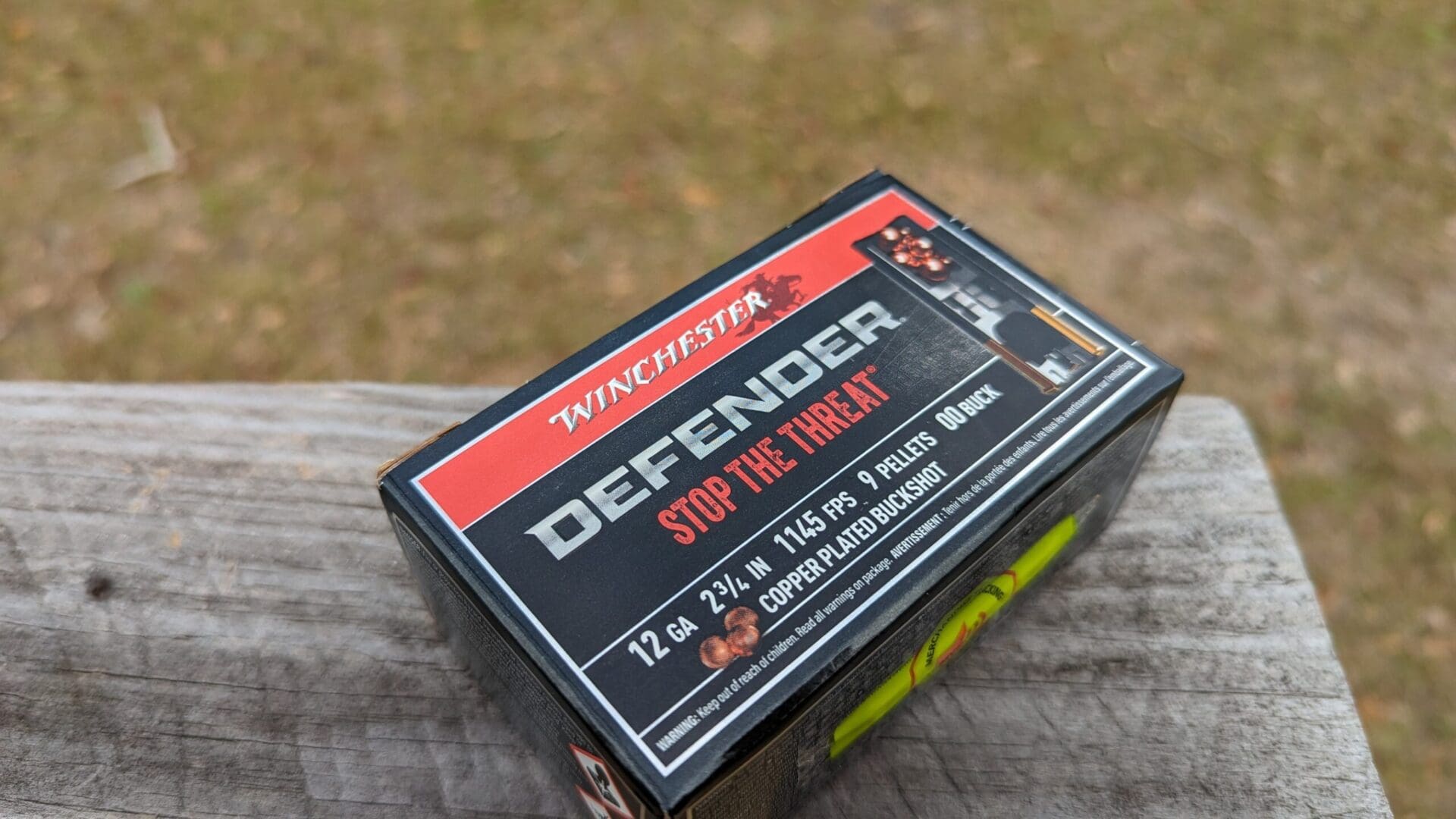
The Defender pellets are copper-plated. That’s great for resisting deformation and helping with penetration through soft targets. The shells have a high brass base. Higher brass tends to feed more reliably in older semi-autos, so that certainly doesn’t hurt. The wad doesn’t seem to be anything fancy, and cutting the shell open revealed some Grex buffering.
The velocity is reported to be 1,145 feet per second. It’s a low recoil load, and low recoil makes sense for fast follow-up shots. Shotgun shell velocities tend to be interesting topics. In the modern era, it seems like lower velocity equals somewhat tighter patterns. In a home defense situation, tighter patterns result in better pellet accountability.
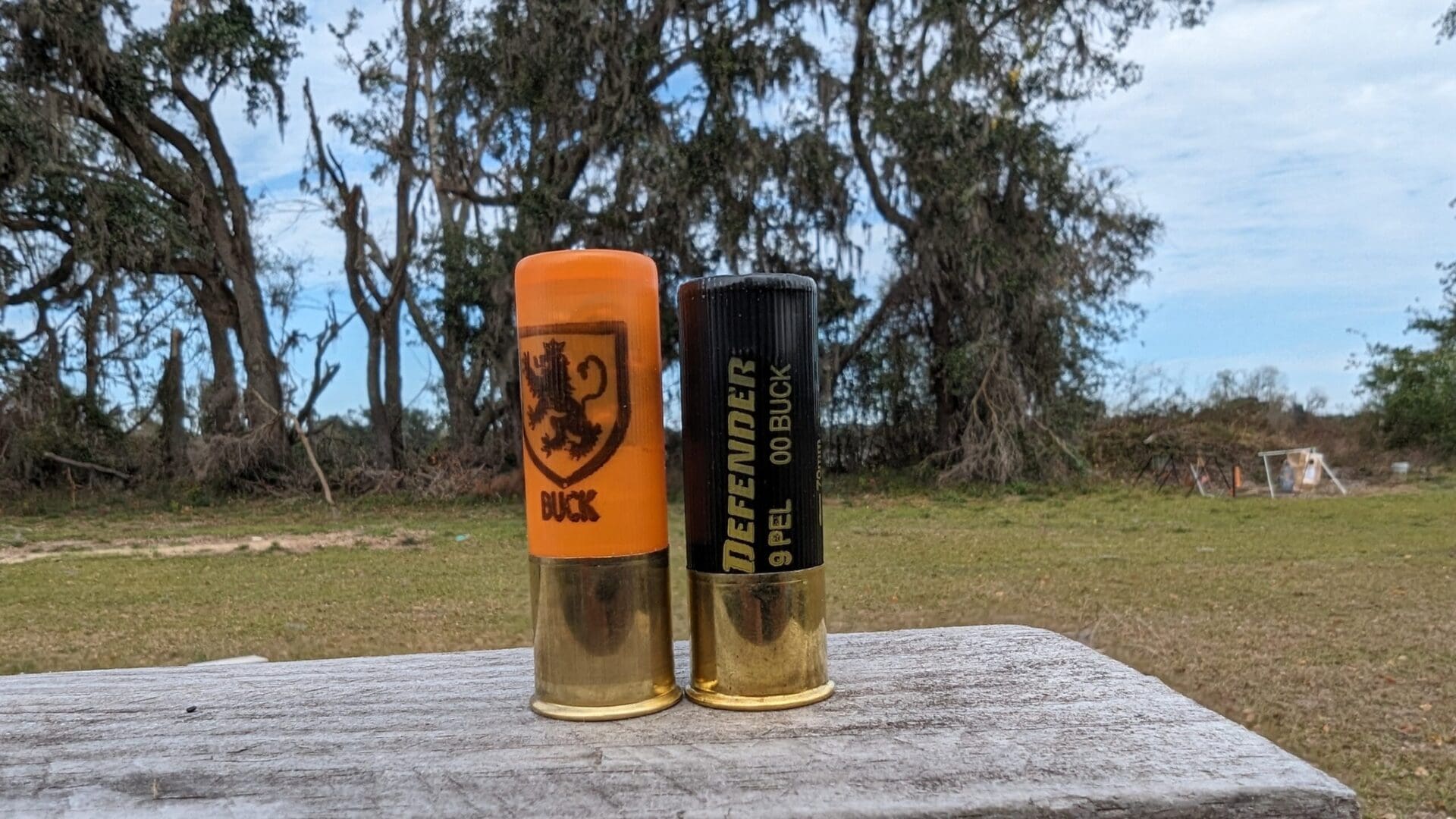
It appears that Winchester took their Double X load, lowered the recoil, and billed it as a self-defense load. I’ve taken a few deer with Double X loads, so that isn’t a knock by any means. However, how does it compare to modern defensive buckshot loads?
To the Range
I took the Winchester Defender Buckshot to the range with a few different shotgun platforms. I wanted to see how it cycled in a semi-auto and a pump gun, so I brought a Mossberg 940 Tactical and a 590A1. Alongside those shotguns, I brought a TAC-14 to see how it handled in the shorty, stock-free 12 gauge.
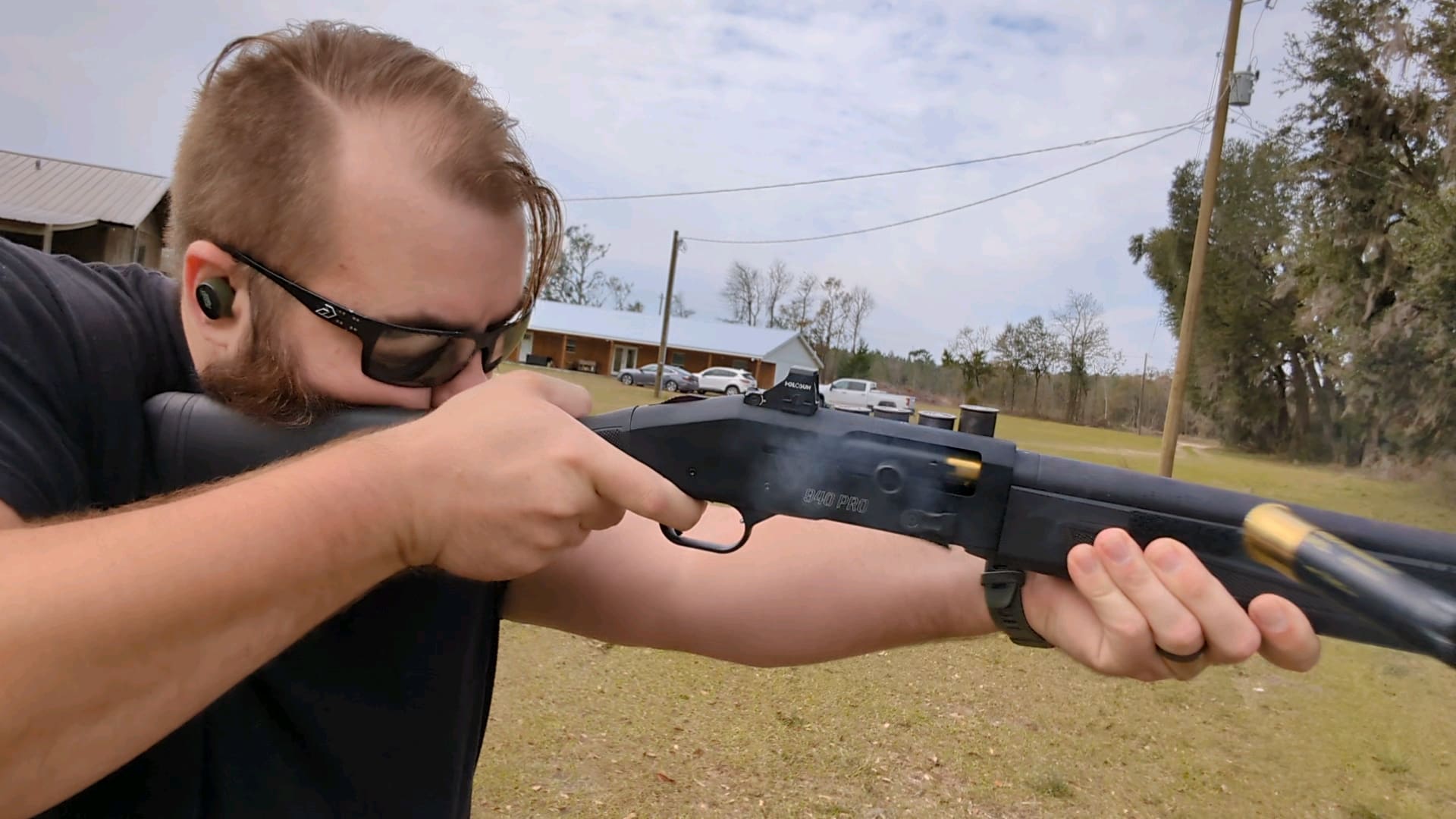
I used the 940 Tactical first, and it ran without a single issue. The gun cycled flawlessly, and the shells flung out consistently and easily. The same could be said with the 590A1. It ate through the ammo without any reliability issues at all. As I shot the guns, I patterned the loads and observed any noticeable issues.
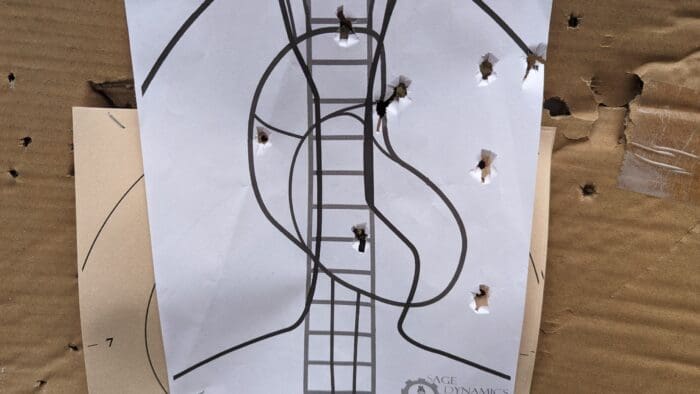
I honestly wasn’t impressed with the patterns. They were consistent, which is nice, and in 20 rounds, there wasn’t a single 9th pellet flyer. At 15 yards, the patterns ranged between eight and ten inches. That’s not terrible by any means, but it also doesn’t hold a candle to Federal Flitecontrol or even Hornady Critical Defense/Black.

For control purposes, I utilized a couple of rounds of Monarch buckshot. Monarch is cheap and fairly standard buckshot. The patterns were tough to tell apart, to be honest, and the Monarch cost far less than the Winchester Defender.

Performance was, well, pretty standard. If the rounds were .50 to .75 cents a pop, it would be a great budget option. But at two bucks a round, I have a hard time justifying this load, especially when Fiochi Defense Dynamics buckshot tends to be about equal for a lot less money.
What About the TAC-14?
I really enjoyed how low recoiling Defender was in the TAC-14. While the advertised velocity is 1,145 feet per second, I wouldn’t be surprised if it’s even lower. Through the TAC-14, it felt downright comfy and controllable. This load is softer recoiling than the Federal Flitecontrol load through the TAC-14, and that makes it super easy to control and shoot.
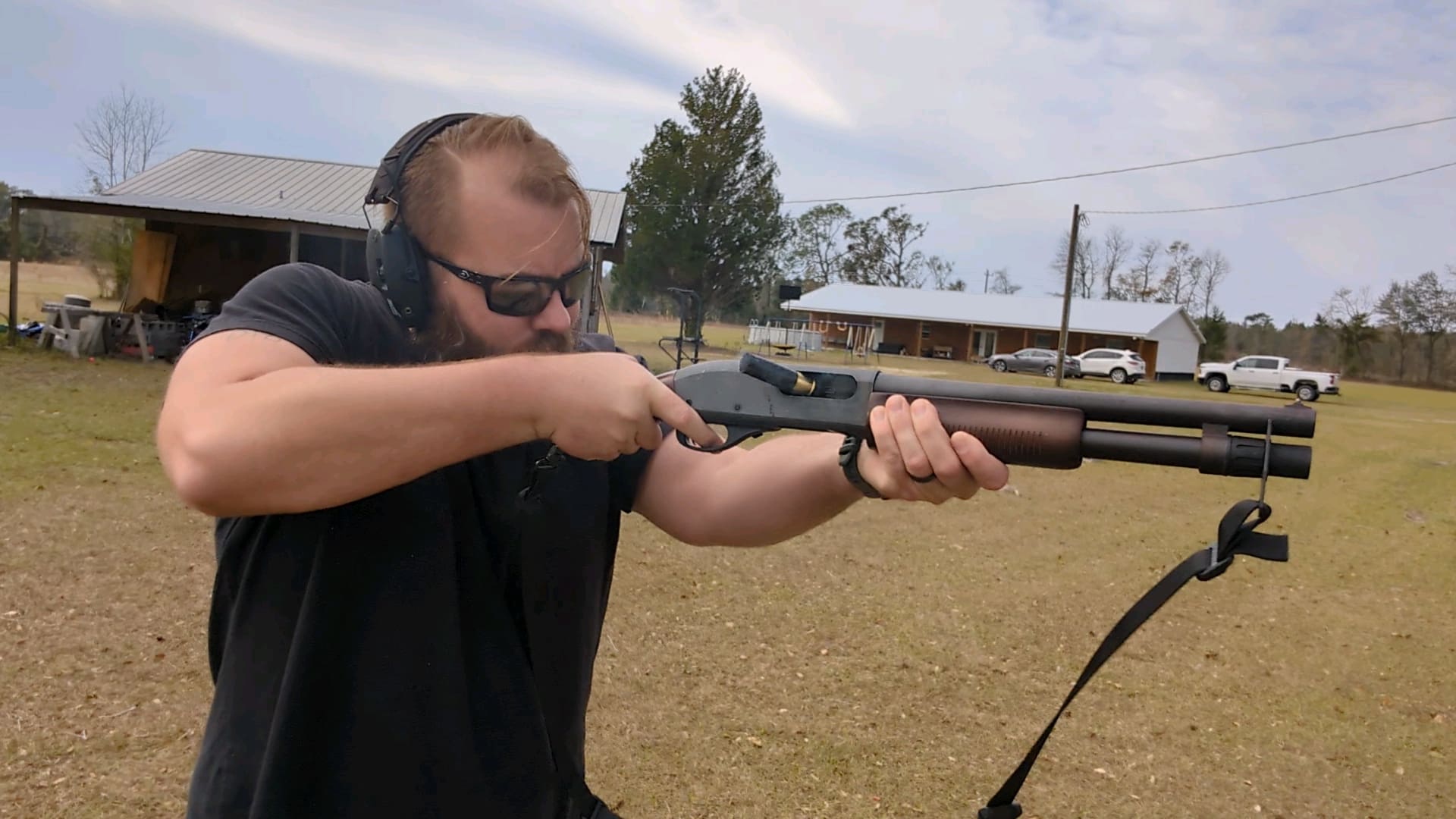
Maybe the best place for the Winchester Defender buckshot is in a TAC-14? It certainly doesn’t perform on par with other premium loads, but it’s soft through the micro cannons that like the Shockwave and TAC-14.

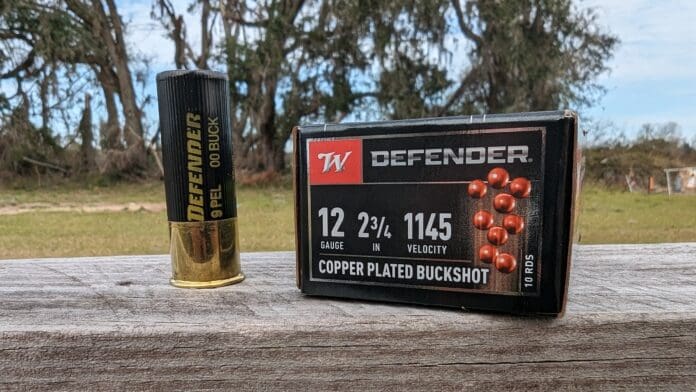



Once I went Federal FliteControl (the lower recoil 8 pellet “Tactical” version) nothing else has been worth looking at. Thanks for this. Now I don’t have to buy a box to try it out.
I really like the Federal rounds as well.
I have very different (almost opposite) requirements for defensive and hunting buckshot. Lots of good comments on the older article.
Well this is interesting. Getting my Maverick88 up & running next week. I have plenty of buckshot & slugs(60 rounds of Herters mini buck, buck & slugs) + newer stuff)but the more the merrier.
I like #4 buckshot for inside the home for defense. Will penetrate a person with a leather jacket, not not over penetrate the interior walls.
The #4 buckshot WILL penetrate not only interior walls but exterior walls. Build yourself a mockup and test it.
Substantially less potential for that after blowing through a home invader than 00. If you miss then yeah could be saying hi to the neighbors. Similar concept with 5.56 as it needs to fragment a bit before it doesn’t go through as much. But the point of anything that can adequately go through a person will go through most modern construction (bricks and concrete as possible exceptions) walls is a good one. Could do ballistic fiberglass insulation/drywall I guess but wouldn’t want that bill for a whole house.
…any load sufficiently powerful to reliably incapacitate an attacker will penetrate a wall.
Some guys build a frame and did the tests so you don’t have to > https://www.theboxotruth.com/threads/the-box-o-truth-3-the-shotgun-meets-the-box-o-truth.284/#post-958
Exactly!
If you really want to ensure that no projectiles penetrate any walls, insert muzzle in bad guys a$$ then inseminate them with whatever load you are using.
Rather than obsess over ammunition, be cognizant of the floor plan of your home. Know where your spouse and children are sleeping. Talk to spouse and children about taking cover if an intruder enters the home. Know where your family members are likely to take cover.
Understand the laws of probability. Your disciplined defensive fire will pose far less risk to your family than the bad guys’ undisciplined, offensive fire. Given even minimal competence, shooting to defend your family poses far less risk than not shooting.
MacMinniville Oregon had a shooter that allegedly fired some 243 rounds from various rifles and a handgun.. Although he thoroughly ventilated the neighborhood, he failed to hit anyone. As a result, Yamhill County Judge Ladd Wiles and a jury of MacMinniville morons declined to convict him for attempted murder.
No thanx, I want my pellets going as fast as they can.
“The Defender pellets are copper-plated. That’s great for resisting deformation and helping with penetration through soft targets.
Huh?
Pick up a round of copper-plated .22lr and press the edge of your fingernail into it. It dents easily.
Lead is soft, and copper is soft, I’m having a tough time seeing where a thin copper plating is going to improve projectile rigidity when tens of thousands of pounds of pressure kick it in the ass…
The issue is the tensile strength rather than the compression strength of the copper. Spherical buckshot has the minimum surface area to volume ratio. Buckshot can’t deform without increasing its surface area. Deformation then requires the copper plating to stretch. The higher tensile strength of the copper plating resists the deformation better than a pure lead pellet.
“The issue is the tensile strength rather than the compression strength of the copper.”
That makes sense, a day I learn something new is a good day.
Also explains why they do it to bulk .22lr… 🙂
Geoff. That .22 isn’t really copper jacketed. It’s another process called copper wash. If you can scrape it with your fingernail it’s just a decoration.
I have Hornady Critical Defense 12ga 00, Federal Classic 00 and Sellier&Bellot 00…and a good recoil pad.
Funny democRats…
Gatekeeper slugs if you want to see something different. TAOFLEDERMAUS did a video or two about them.